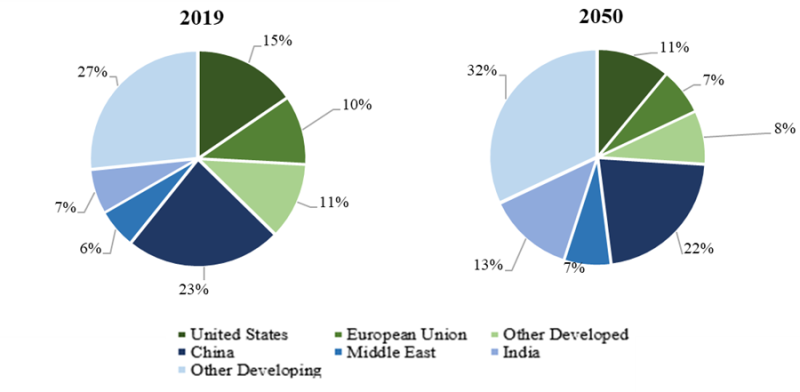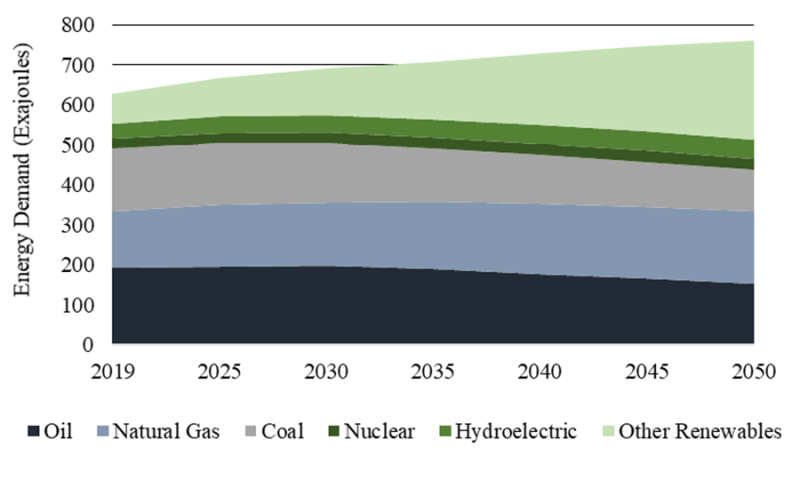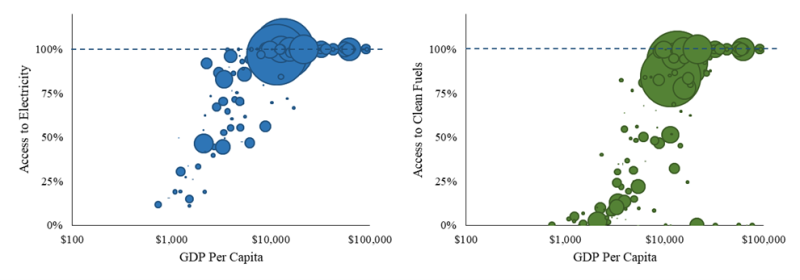Last October, I wrote about petroleum engineering’s bright future. If anything, that rings truer today than back then. As my tenure as Editor in Chief of the The Way Ahead nears its end, geopolitical events have made it increasingly clear how fundamental energy—and particularly oil and gas—is to a functioning global economy. High energy prices make it hard to heat homes and businesses, hamstring manufacturing, and erode financial stability. The impacts are not academic and those costs get passed on to consumers—European fertilizer prices have risen 60% with agricultural products including meat and dairy up by 25% to 80%.
Affordable, clean, and widely available energy will be critical to control inflation, support reliable supply chains, and boost sustainable economic growth. While the energy transition poses many challenges to young professionals in traditional oil and gas engineering fields, it also provides opportunity for career development and for them to make an outsized impact on the world. Young professionals need to keep an eye on three trends that will drive the changing energy landscape:
- The global supply of energy will continue to diversify.
- Economic growth will increase energy demand.
- Energy security and geopolitics will remain intrinsically linked.
The World Needs More Energy From More Places
Global energy supply is projected to diversify significantly over the next 30 years, with less fossil fuels and more renewables (Fig. 1). The rapid rise in renewable energy production has been driven by multiple factors, most notably the decline in construction costs—wind and solar levelized costs have fallen 72% and 90% since 2009, respectively. In addition, the buildout of renewables has been supported by government policies and other incentives such as tax credits.

Fig. 1— Between 2019 and 2050, low-carbon energy supply is expected to rise from 22% to 43%. While natural gas production will likely grow, oil and coal supply are expected to fall substantially.
Source: bp Energy Outlook 2022 New Momentum scenario.
While the shift towards renewables may pose challenges for the industry, it also will create opportunities for oil and gas engineers, particularly those early in their career:
- First, oil-and-gas-adjacent fields such as geothermal energy and carbon sequestration will require young professionals with petroleum engineering skill sets. The industry will continue to need individuals with in-depth subsurface engineering experience—a challenge that some engineering schools have begun to address through their curriculum.
- And second, global energy demand is shifting, with much of the growth in developing countries like China and India (Fig. 2). The globalization of energy demand also means the globalization of infrastructure development, requiring more engineering expertise in more places.
Altogether, that means that the world will continue to need reservoir modelers, drillers, refiners, and infrastructure engineers in more places than ever before. For a well-placed and entrepreneurial young professional, the energy transition could become an opportunity to work on cutting-edge projects.

Fig. 2— Energy production is expected to grow most rapidly in the developing world—rising from 63% to 74% of global supply between 2019 and 2050.
Source: bp Energy Outlook 2022 New Momentum scenario.
Expect an Energy Addition—Not Just an Energy Transition
The future will not just be about renewables and other alternative sources of energy such as biofuels. Many young professionals will continue working in traditional petroleum engineering roles because oil and gas will remain a core part of the global energy supply for the foreseeable future. In fact, fossil fuels are expected to remain over 50% of the global energy supply even in 2050 (Fig 3.). If anything, the demand for some forms of oil and gas could increase, with Shell forecasting LNG demand rising over 80% in the next 20 years and others expecting a modest rise in demand for fuels such as gasoline.

Fig. 3— Oil and gas demand is expected to remain flat between 2019 and 2020. Declining coal consumption will be offset by rapid growth in renewable energy, primarily wind and solar power generation.
Source: bp Energy Outlook 2022 New Momentum scenario.
With existing fields declining by 4% to 8%, new fields will need to be discovered and new wells drilled to meeting ongoing demand for oil and gas over the coming decades. Beyond that, engineers will need to extend the lives of aging producing assets, expand refinery capacity, and build new pipelines. That requires a well-educated and experienced workforce, creating opportunities for those entering who have recently joined the industry.
Increasing Access to Energy Will Remain Paramount
The world continues to face the interconnected challenges of energy poverty and energy security. While energy poverty is a global issue, it is concentrated primarily in lower- and middle-income countries (Fig. 4). Despite the fact that many wealthier countries do not face energy poverty as it is traditionally defined, the developing world is not alone in facing energy access challenges—rising prices and infrastructure bottlenecks can lead to broader insecurity impacting both lower- and higher-income countries. Tackling both will require engineers from a wide variety of backgrounds including young professionals working in the oil and gas industry.

Fig. 4— Widespread access to electricity (left) and clean fuels (right) is generally limited to countries with more than $10,000 in per capita gross domestic product (GDP). Roughly 60% of countries fall below this threshold.
Source: Our World in Data
Tackling energy poverty could take decades. Despite rapid economic growth and trillions of dollars of investment, reliable access to affordable energy remains remote for many. Almost one billion people lack electricity and three billion do not have clean cooking fuels. Renewable power generation can be part of the solution, but the world will need a wide range of energy sources—including fossil fuels—to provide higher living standards for billions of people.
Long-term energy security could pose an even greater challenge, requiring not just developing new sources of energy but also an increased investment in infrastructure. For example, Russia cut natural gas exports to Europe in retaliation to sanctions. Combined with limited LNG import infrastructure, European prices are up by 3,000% in past 2 years. To prevent future shortages, European countries—as well as others similarly reliant on imports—will need a large-scale buildout of redundant energy infrastructure including LNG terminals, pipelines, and transmission lines as well as investment in novel technologies such as biofuels and hydrogen production.
Petroleum Engineering’s Bright Future
The world will need a lot more energy to end energy poverty and increase energy security. But beyond that, it will also require more energy just to keep pace with global economic growth. Much of that energy may come from newer sources such as wind, solar, and geothermal; however, much of it also will come from more traditional sources including oil, natural gas, and coal. At the same time, the world will need to find ways to reduce emissions in not just the power sector, but also in harder-to-abate industries requiring the development of carbon sequestration and alternative fuels. This requires tackling hard engineering challenges. That means energy transition will require a lot of young professionals with engineering skill sets and energy industry experience to provide affordable, clean, and widely available energy. So, despite tremendous uncertainty and an ever-changing energy landscape, petroleum engineering will remain relevant for decades to come—creating opportunities for young professionals to develop their careers and make an outsized impact on the world.


